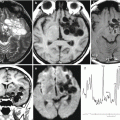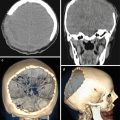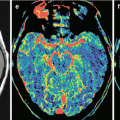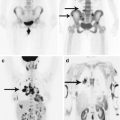, Valery Kornienko2 and Igor Pronin2
(1)
N.N. Blockhin Russian Cancer Research Center, Moscow, Russia
(2)
N.N. Burdenko National Scientific and Practical Center for Neurosurgery, Moscow, Russia
CAG is an X-ray technique of studying the vascular brain and spinal cord system, whose first stage is an artery puncture (usually the femoral artery) and its subsequent catheterization (Bryusova 1951; Galperin 1962; Arutyunov and Kornienko 1971; Krayenbuhl et al. 1979). Under fluoroscopic control, a catheter is inserted in the vascular pool of interest (selective angiography) or a separate vessel (superselective angiography) of the brain, followed by intra-arterial administration of a contrast agent with serial shots of the skull in the corresponding view (frontal, oblique, lateral). When studying the characteristics of the vascular structure of brain tumors based on cerebral angiography, Olivecrona and Tonnis (1954) noted that when metastases are located convexitally, their architectonics can have a picture similar to the architectonics of meningiomas. The authors failed to discover differences in metastases of different origins based on the characteristics of vasculature architectonics. Subsequently, some researchers reported that the vascular pattern of melanoma metastases in the brain was characterized by a “porous structure” with clear outlines; however, in cystic lesions, abnormal vasculature was sometimes not detected, but vessel dislocation might be observed (Rosner et al. 1986). According to CAG findings, solid metastases in the brain have a relatively homogeneous pattern of accumulation of a contrast medium, while the vasculature of glioblastomas is characterized by the presence of multiple arteriovenous shunts; therefore, the contrast agent accumulation pattern in these lesions is nonuniform (Kornienko and Pronin 2008a, b; Dolgushin 2012).
Stay updated, free articles. Join our Telegram channel

Full access? Get Clinical Tree








